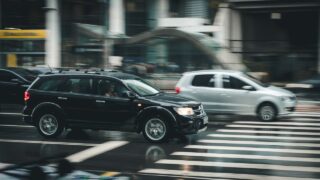A bus is a vehicle whose direct purpose is the transportation of passengers of 8 or more people. The main role in passenger transportation is the organization of safe and comfortable transportation of people. Exactly the bus is able to provide both of these important requirements, due to what it is popular in all countries of the world.
Classification
All types of buses can be classified according to their purpose into the following:
City buses. Routed transport for transporting passengers within the city limits, follows a set route, with numerous stops for embarking/disembarking passengers. As a rule, such a passenger bus is equipped with at least two doors, wide aisles and handrails.
Intercity (tourist) buses. Designed for long-distance passenger transportation. Therefore, tourist buses are more comfortable, equipped with comfortable seats, seat belts. Some models can be equipped with a TV, berths, air conditioning and a lavatory. A mandatory option for intercity buses is the presence of a large luggage compartment.
Shift buses. These buses are designed to transport the working crew to the place of their destination. They represent a bus cabin, located on the truck chassis. Due to excellent cross-country capability of such vehicles on rough roads, an employer ensures smooth delivery of workers to the sites. A special high-capacity compartment is provided for luggage and tools. To date, the shift bus is the best transport for crew transportation, the demand for it is always high, even despite the fact that the technique does not belong to the category of cheap.
School buses are buses specially equipped to transport children. They must have seat belts, alarm systems in the cabin to communicate with the driver, and additional mirrors are provided to control boarding/unloading. For the convenience of children in the bus there are seats, reduced in size, special handrails and low steps at the entrance. All school buses are bright yellow in color.
Front-end buses. Buses take passengers from the plane to the airport building and back. Such buses usually have a large capacity, and for the convenience of passengers with luggage there are low steps. There are also models equipped with ramps, so passengers can get on the plane directly from the bus.
Excursion buses. Valued because such buses are higher than other models, it eliminates the need to get off the bus to see the sights. There are also double-decker models with an open top.
Types of engines: gasoline, diesel, electric, fuel cell, duobus (a technical hybrid of a trolleybus and diesel bus).
Another important indicator is the seating capacity. It depends directly on the layout and the number of seats. Total capacity can be determined by adding the number of seats and standing places.
Manufacturers
The sphere of bus production has many companies of various profiles. Only large holdings, such as the German corporation MAN, the automobile concern Daimler AG (Mercedes-Benz), Renault, Industrial Vehicles Corporation (IVECO) and several Japanese corporations can afford to produce their own buses. Often these companies make only the body, and the chassis are assembled from purchased parts. Among such companies are Gottlob Auwarter-Neoplan, Setra, Van Hool, Berkhof and Ikarus. The automobile companies Dennis, Volvo, DAF and Scania, or more precisely, their bus departments are only engaged in the assembly of frame chassis for buses.


